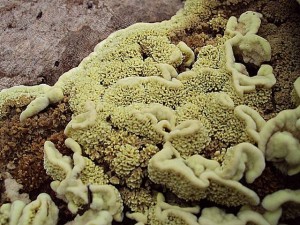 A team of researchers scrutinizing the floral diversity of the Singhad forest region in Maharashtra have found more than 1000 species of fungi and 60 different types of lichens. The researchers believe this is a significant find as fungi are both economically valuable and ecologically important.
A team of researchers scrutinizing the floral diversity of the Singhad forest region in Maharashtra have found more than 1000 species of fungi and 60 different types of lichens. The researchers believe this is a significant find as fungi are both economically valuable and ecologically important.
The team comprised of J G Vaidya from the University of Pune, V D Ranade from the MES Garware College, Sachin Punekar from Biospheres and Kiran Ramchandra Ranadive from the Waghire College in Saswad.
The Sinhagad forest area has dry and moist deciduous forest which is an ideal habitat for fungi, which occur on the fallen wood parts and leaf litter. Various pattern of fungal succession is seasonal occurrence too. During heavy rains, mushrooms are also found in abundance.
According to Ranadive, fungi have been known to be medically useful and the study will further enhance the knowledge people have about these group of plants that are used frequently to make antibiotics as well as for enzyme action for industrial use.
Punekar, who is the founder-president of Biospheres, said fungi are recyclers of forest as they help in recycling of nutrients.
“Healthy forests require fungi which are also scavengers of the forest. There is a need for proper awareness regarding the importance of fungi which have several uses for both humans and plants. Bioprospecting and domesticating them will ensure monetary benefits,” he said.
The researchers feel their field of study has been neglected so far with more scientists concentrating on larger plants and animals.
Fungi Haven
The team found abundant evidence that the Singhad area was a wonderful fungal habitat.
“‘Flavodon Flavus’ and ‘Caloplaca’ are the two fungi found in Sinhagad forest area that are used in dyeing industry for its yellow pigment. The other species, ‘Lycoperdon’ fungi, is used by tribals for healing wounds. ‘Ganoderma’ that are wood-decaying fungi and can cure more than 100 diseases are also found in and around Sinhagad,” said Ranadive.
Other important discoveries were,
- Fungi which are indicator of disturbed vegetation – Common fungi called ‘Pisolithus Arhizus’, which is originally from Africa but now found all over India. It is an indicator of disturbed vegetation found in the Sinhagad forest area occuring on termite mound. The fungi are edible.
- Bio-luminescent fungi – A fungal species that glows at night, mycelium of ‘Xylaria Hypoxylon’.
- Bird’s Nest Fungi – A fungi called ‘Cyathus’ that resembles tiny bird’s nest filled with eggs.
- Parasite Fungi – It can act as a parasite and kill or seriously harm insects. The researchers found ‘Cordyceps’ fungi that comes in this category.
Punekar said, “There are certain groups of fungi which grow on hair shed by wild animals, cowdung, animal excreta and some reside inside plant tissue. Fungi are air-borne too and found in the atmosphere. They can cause allergies or respiratory problems. Hence they are clinically important.”
Like many other species the major worry for the survival of these fungi is habitat destruction. Punekar points out that the fungi will die if there is no leaf litter. Since fungi need specific moisture content, changes in climate and temperature can affect their reproductive phenology, he added and therefore erratic monsoon patterns are a threat too.
The researchers also found several lichens in the area and said that these are an indicator of a non-polluted area. They can be found on the rocks, bark and leaves. A rare lichen, ‘Dermatocarpon’, is typical of rocky outcrop of Sinhagad.
It is clearly a field of study that needs a little more appreciation.
More Related Stories,
Researchers Find Rare Plant Species after 161 Years
How Mumbai Mangroves Save the City everyday






4 thoughts on “Researchers find Thousands of Fungi Species in Singhad Forests”